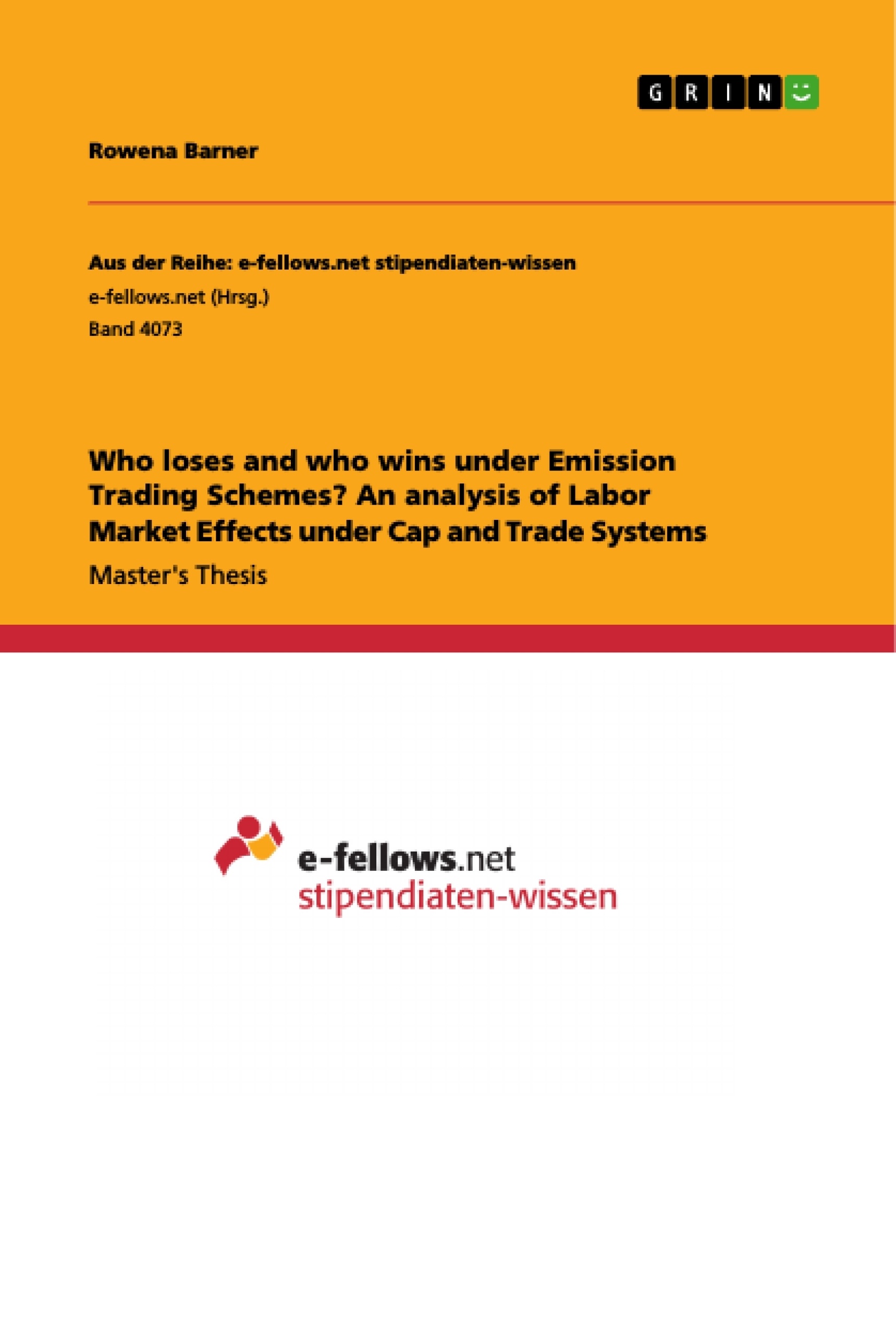The European Union’s Emission Trading System (EU ETS) is the main policy instrument to cut greenhouse gas emissions within the EU. This work specifically focusses on the labor market cost effects of the introduction of the EU ETS, separated by the individual effects for the three economic actors: firms, households, and the state. In the form of a literature analysis, the main results for these individual actors are recontrasted and the central research question of who wins and who loses under EU emissions trading is answered.
It could be found that households, in particular low-income groups, are the main losers of the system, since they substantially bear the higher production costs of firms. Firms, on the other hand, although being the direct emitters of greenhouse gases, are not significantly affected by the system through the creation of various compensation mechanisms. Therefore, this analysis classifies them as the winners of the system. Moreover, the state is also considered a winner of the EU ETS, as it directly receives the profits from the auctioning of emission rights. In turn, the redistribution mechanism it chooses largely determines the extent of losses and the costs borne by households.
Inhaltsverzeichnis (Table of Contents)
- Introduction
- Distributional Effects of Cap and Trade Systems on the Labor Market
- Functioning of a Cap and Trade System
- Distributional Effects of a Cap and Trade System
- Practical Example: Introduction to the EU ETS
- Literature Review
- Effects on Firms
- Context
- Methods and Data Samples in the Literature
- Evidence: Impact of EU ETS on Employment and Profitability
- Critique
- Discussion
- Effects on Households
- Context
- Methods and Data Samples in the Literature
- Evidence: Impact of EU ETS on Income and Wages
- Critique
- Discussion
- Effects on State
- Context
- Methods and Data Samples in the Literature
- Evidence: Impact of EU ETS on GDP
- Critique
- Discussion
- Summary
- Effects on Firms
- Policy Implications for the EU ETS and the Labor Market
Zielsetzung und Themenschwerpunkte (Objectives and Key Themes)
This master's thesis aims to analyze the labor market cost effects of the European Union's Emission Trading System (EU ETS) by examining its impact on firms, households, and the state. The study specifically focuses on identifying who benefits and who loses from the system.
- Distributional effects of cap-and-trade systems on the labor market
- Impact of the EU ETS on firms, households, and the state
- Compensation mechanisms for firms under the EU ETS
- Role of the state in redistributing profits from emissions trading
- Policy implications for the EU ETS to promote a fairer and more inclusive environmental policy.
Zusammenfassung der Kapitel (Chapter Summaries)
- Introduction: This chapter provides an overview of the research topic and sets out the objectives of the thesis.
- Distributional Effects of Cap and Trade Systems on the Labor Market: This chapter delves into the theoretical framework of cap-and-trade systems, explaining their functioning and analyzing the potential distributional effects on different actors in the labor market.
- Practical Example: Introduction to the EU ETS: This chapter presents a detailed overview of the EU ETS, its implementation, and key features.
- Literature Review: Effects on Firms: This chapter analyzes the existing literature on the impact of the EU ETS on firms, focusing on its effects on employment, profitability, and the development of compensation mechanisms.
- Literature Review: Effects on Households: This chapter examines the literature on the impact of the EU ETS on households, particularly focusing on its effects on income and wages, particularly for low-income groups.
- Literature Review: Effects on State: This chapter analyzes the existing literature on the impact of the EU ETS on the state, focusing on its effects on GDP and the role of the state in redistributing profits from emissions trading.
- Summary: This chapter summarizes the key findings from the literature review, highlighting the major distributional effects of the EU ETS.
- Policy Implications for the EU ETS and the Labor Market: This chapter discusses policy recommendations based on the analysis, exploring ways to enhance the efficiency and fairness of the EU ETS to ensure it benefits all stakeholders.
Schlüsselwörter (Keywords)
This thesis examines the impact of cap-and-trade systems, particularly the EU ETS, on the labor market, focusing on the distributional effects on firms, households, and the state. Key concepts explored include greenhouse gas emissions, carbon dioxide (CO2), labor market effects, compensation mechanisms, redistributive policies, and the need for efficiency and fairness in environmental policy.
- Quote paper
- Rowena Barner (Author), 2021, Who loses and who wins under Emission Trading Schemes? An analysis of Labor Market Effects under Cap and Trade Systems, Munich, GRIN Verlag, https://www.grin.com/document/1169817



